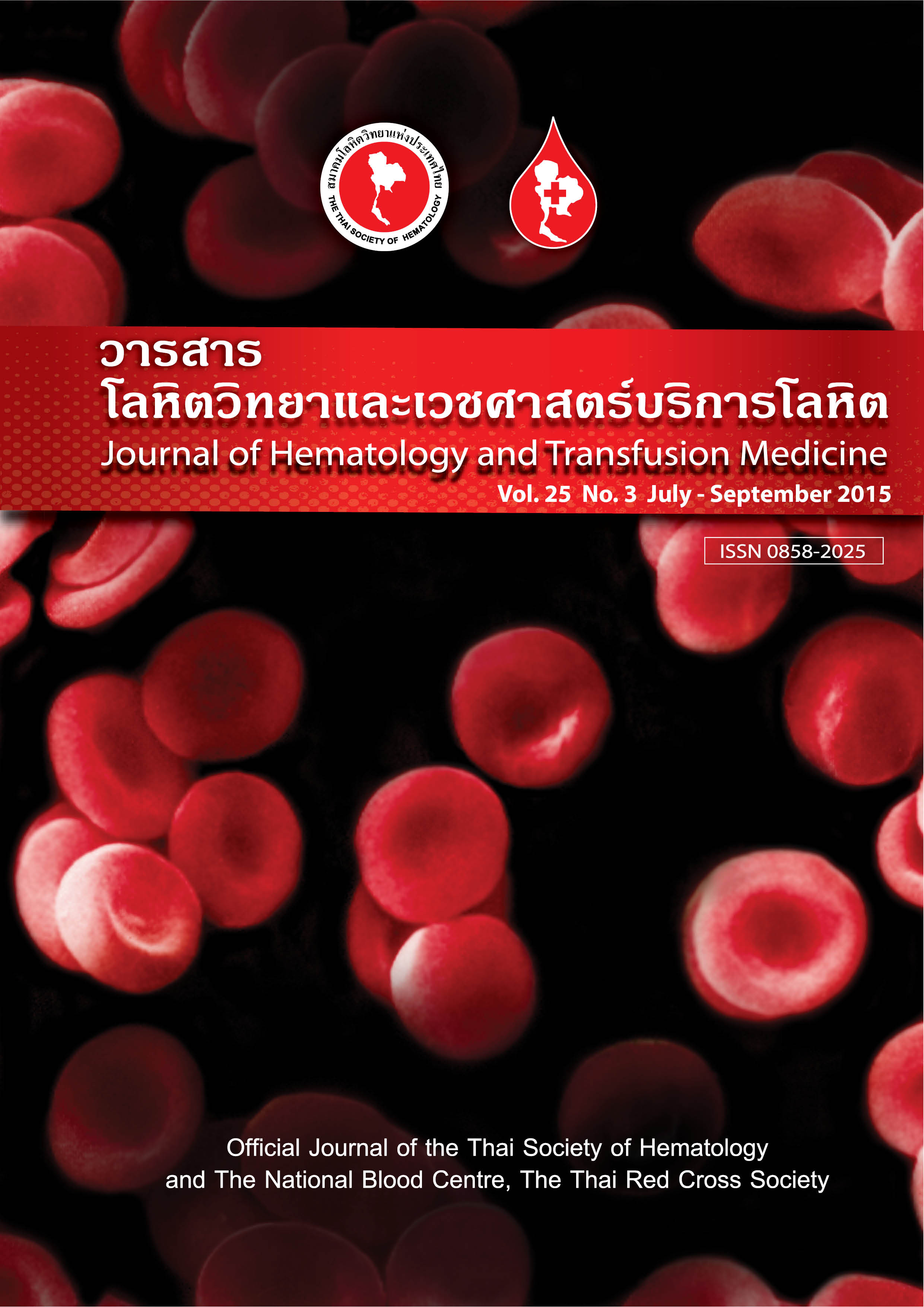Dengue Infection in Pediatric Patients with Thalassemia: Aggravation of Anemia
Keywords:
Thalassemia, Dengue, DF, DHFAbstract
Objectives: To study the clinical manifestations and outcomes of treatment in thalassemia patients with dengue
infection. Methods: A total of 95 acute febrile illness episodes among 88 thalassemia patients (male, 48; female,
40) from three university hospitals between 1997 and 2013, were retrospectively studied. Their median age was
11.6 years (range 2.0 to 19.9). The types of thalassemia included β-thal major (n = 8), β-thal/HbE (n = 32), AE
Bart’s disease (n = 6), Hb H disease (n = 38), β-thal/HbS (n = 1), unspecified thalassemia disease (n = 1) and
homozygous Hb Constant Spring (n = 2). Twenty-four patients were transfusion-dependent while the remaining
patients were non-transfusion-dependent. Splenectomy was performed in 9 patients. Results: Eighty-two
episodes were diagnosed with dengue infection (DF 22, DHF 60: grade I 23, II 20, III 13 and IV 4 cases) while
13 episodes were diagnosed with other self-limiting viral infections. The majority of patients presented anemia
due to acute hemolysis and hemoglobinuria leading to low hematocrit and requiring packed red cell transfusion.
They had elevated levels of AST and ALT resulting from hepatic involvement. Eight of 82 dengue infection cases
were complicated with IAHS (n = 1); seizure (n = 3) caused by hyponatremia, encephalitis and encephalopathy;
and severe liver impairment (n = 4) causing hepatic encephalopathy in 3 cases. The prompt hospitalization of
the indicated patients using a multidisciplinary approach to monitor and provide adequate fluid and packed
red cell replacement therapy and effective bleeding control yielded an excellent outcome with 100% survival
rate. Conclusion: The early recognition, early diagnosis of dengue infection and appropriate packed red cell
transfusion are essential for a favorable outcome.



